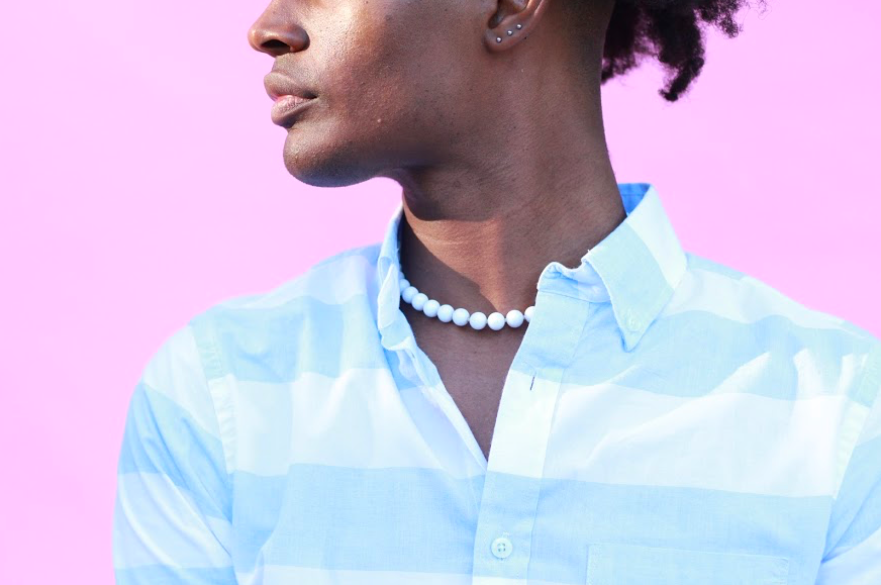One of the most common questions I get is whether The Pillow Talk Project is only about and for gay men. My response is always the same: no. This is a movement dedicated to creating safe spaces for ALL men–and those who love them. If you’re LGBTQ+, great. If you’re hetero, even better.
Usually, I leave it at that.
But perhaps it is time to really get down to the heart of why that question is asked in the first place, and what it says about current understandings and pressures around masculinity.
I’ve found there are generally four reasons men aren’t always willing to be interviewed or outrightly assume The Pillow Talk Project is exclusively a non-hetero project:
1) Men are photographed in ways that seem softer and more vulnerable, and sometimes wearing very little clothing, which makes some men uncomfortable and fear being too “exposed.”
2) There is a dual focus of LGBTQ+ and hetero male stories, which means it is very possible you’ll find yourself reading stories about the lives of LGBTQ+ men. The stories are all mixed together, instead of separated on the site.
3) The interview topics are sensitive and fearless, exploring taboo subjects such as beauty, masculinity, coming-of-age stories, and male desire (love, intimacy, relationships, and sexuality)–all topics men are conditioned to avoid unless behind closed doors.
4) The trifecta indicated above usually results in men being supportive of the purpose of the site and what it stands for, but afraid to be mistaken as non-hetero, regardless of whether it is true or not.
The points above aren’t an exhaustive list; every man who encounters this work may have a number of factors that inspire him to participate or choose not to. But what’s clear is that, even at first glance, this work pushes against conventional norms of masculinity on purpose, unapologetically.
The Pillow Talk Project is a queer project for ALL men. Not queer as in homosexual–although that is more than welcome–but queer as in strange, unorthodox, atypical, unexpected, and unfamiliar.
Based on my personal experience–and my research confirms it–all men live in constant fear of never being “man” enough. Even the most confident men who seem to embody all of society’s most desirable traits of manliness. And as a result, we live silencing the best parts of ourselves so that we don’t make those around us uncomfortable or risk being called out as feminine, gay, a pussy, or told to “man up.”
We’re constantly reminded that to be masculine is the key to being desired and successful. No matter where you might naturally fall on the spectrum of masculine and feminine. But the Pillow Talk Project was created to prove there is no one way to be a man, and to celebrate the many different ways we can fearlessly express ourselves.
In order for us to do that, we must all embrace a new definition and embodiment of masculinity–not just one of brawn but of fearless empathy and intimacy. We must accept terms such as “masculinity” and “manhood” as social constructs that have been created to oppress, not restore or build. And then we must stare them down and understand that they vary depending on the individual and are truly amorphous, evolving. That’s the key to moving forward.
There’s a reason this is a project for ALL men. Because it is going to take all of us to create a change. In ourselves. In the world around us…Even if it goes against what society deems as masculine or man enough.
Remember those four reasons I mentioned? Let’s take another look at them with some additional context–hopefully enough to explain why they shouldn’t scare men away, but inspire them to participate:
1) Men are photographed in ways that seem softer and more vulnerable because we believe there are multiple sides to every man beyond the stereotypical “hard” pose of staring down the camera. We’re committed to inviting the world in to experience it for themselves.
2) There is a dual focus of LGBTQ+ and hetero male stories because all of us are men. And those who don’t necessarily identify as a man also have a stake in redefining masculinity. Different backgrounds and perspectives allow us to learn from each other and to push our limited perspectives of what’s possible. We’re all in this together. Point blank.
3) The interview topics are sensitive and fearless because in order to heal we must talk. About everything. Why? Because the more fearless we can be in owning our truth, the more people we can empower to do the same so we can heal on our own, and together.
4) The trifecta indicated above usually results in men being supportive but are afraid to be mistaken as non-hetero. However, they shouldn’t be afraid because this is a project for ALL kinds of men–and we need everyone. Not just gay men. Not just straight men. Everyone. And the more unique, fearless, and interesting, the better.
There’s a reason this is a project for ALL men. Because it is going to take all of us to create a change. In ourselves. In the world around us. And whether you choose to participate or not, we all deserve a place we can be embraced without judgement. Without fear. Even if it goes against what society deems as masculine or man enough.
It’s about time society dared to catch up. So, I’ll end this in the great words of George Bernard Shaw, in hopes that you’ll be brave enough to be unreasonable–in the name of progress. Because the world needs you. And we need each other:
The reasonable man adapts himself to the world; the unreasonable one persists in trying to adapt the world to himself. Therefore, all progress depends on the unreasonable man.
